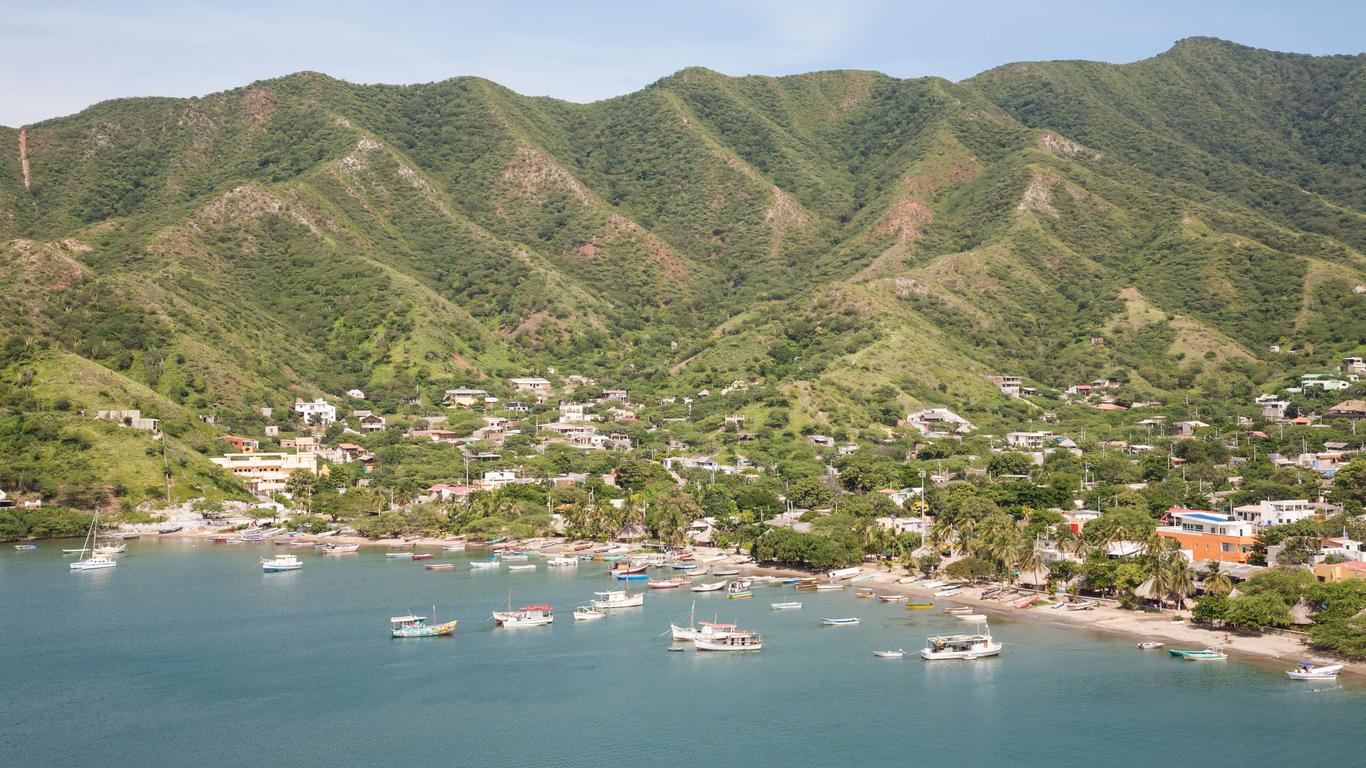Boasting a picturesque setting on Colombia’s Caribbean coastline, Santa Marta is a busy port and the capital of Magdalena Department. It was the first Spanish settlement in Colombia and is one of South America’s oldest surviving cities, serving as the gateway for trips to Tayrona National Natural Park.
Santa Maria’s city centre lies adjacent to its busy Caribbean port, with cargo ships coming and going throughout the day. The Museo del Oro is located here, with an impressive collection of pre-Columbian pottery and a scale model of Ciudad Perdida, the ancient “Lost City” which nestles in the Sierra Nevada to the south. The magnificent whitewashed Catedral Basílica de Santa Marta lies at the heart of the city centre. It is claimed to be one of Colombia’s oldest churches and beautifully adorned with religious paintings and statues. Just to the east of the city centre is La Quinta de San Pedro de Alejandrino, a 17th century hacienda which is famed as the place where Simon Bolivar died in 1830. Today it serves as a museum, with beautiful gardens and a statue of this renowned political leader. To the north of the city is the former fishing village of Taganga which is now a popular destination for scuba diving in the offshore coral reefs, while to the south is the more upmarket beach resort of El Rodadero. In the mountains to the east lies the small village of Minca which boasts impressive views of Santa Marta’s coast and provides a tranquil escape from the bustle of the city below. The biggest allure in the region is Tayrona National Natural Park which lies further north, with idyllic Caribbean beaches surrounded by lush jungle and accessed either on foot or by a horse.
Santa Maria is served by the Simon Bolivar International Airport, with flights from both Bogota and Medellin, as well as by long-distance bus from Cartagena and Barranquilla. Taxis are the main means of getting around the city and work on a fixed-price basis, while local buses serve the surrounding beach resorts.
Prior to Spanish arrival and the establishment of Santa Marta, the region was inhabited by various indigenous groups, including the Tayrona. Archaeological excavations have uncovered agricultural terraces for cultivating corn and yucca, together with underground stone channels, pottery, stonework and gold.





